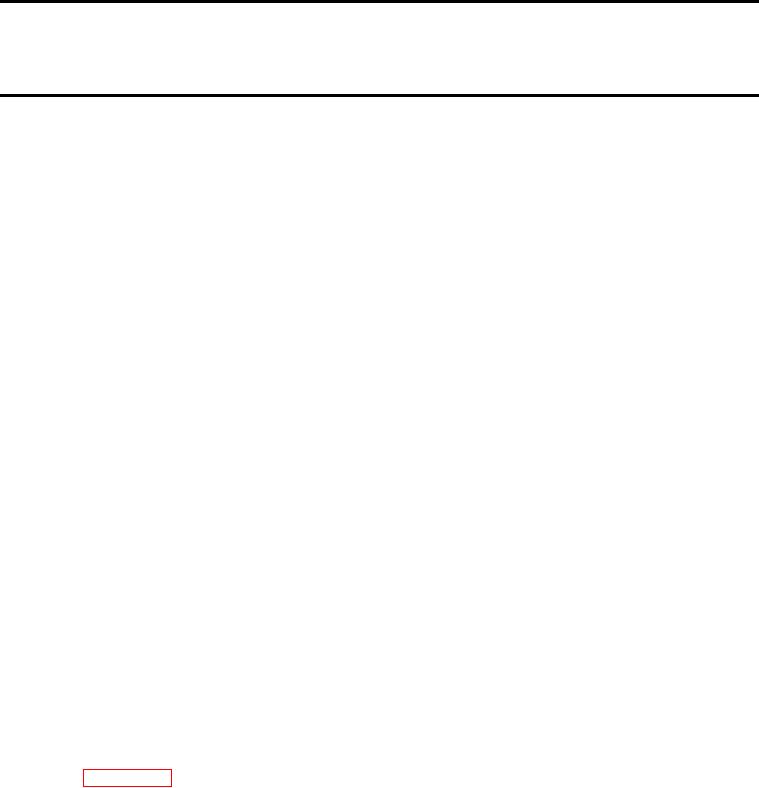
TM 1-1730-202-13&P
JACK, HYDRAULIC, TRIPOD, TYPE B-5
PART NO. 50K25177 NSN 1730-00-516-2018 EIC: NA
GENERAL INFORMATION
SCOPE
These instructions are published for the use of operating and maintenance personnel to whom the tripod hydraulic
jack is assigned. They contain information on operation, lubrication, detailed preventive maintenance, servicing
and maintenance of the equipment, its accessories and auxiliaries.
MAINTENANCE FORMS, RECORDS, AND REPORTS
Department of the Army forms and procedures used for equipment maintenance will be those prescribed by (as
applicable) DA PAM 750-8, Functional Users Manual for the Army Maintenance Management System (TAMMS);
DA PAM 738-751, Functional Users Manual for the Army Maintenance Management Systems - Aviation (TAMMS-
A); or AR 700-138, Army Logistics Readiness and Sustainability
REPORTING EQUIPMENT IMPROVEMENT RECOMMENDATIONS (EIR)
If the Jack, Hydraulic, Tripod, Type B-5 needs improvement, let us know. Send us an EIR. You, the user, are the
only one who can tell us what you do not like about your equipment. Let us know why you do not like the design or
performance. If you have Internet access, the easiest and fastest way to report problems or suggestions is to go
to https://aeps.ria.army.mil/aepspublic.cfm (scroll down and choose the "Submit Quality Deciency Report" bar).
The Internet form lets you choose to submit an EIR, a Product Quality Deciency Report (PDQR) or a Warranty
Claim Action (WCA). You may also submit your information using an SF 368 (PQDR). You can send your SF 368
via e-mail, regular mail or facsimile using the addresses/facsimile numbers specied in DA PAM 750-8, Functional
Users Manual for the Army Maintenance Management System (TAMMS). We will send you a reply.
CORROSION PREVENTION AND CONTROL (CPC)
CPC of Army material is a continuing concern. It is important that any corrosion problems with this item be reported
so that the problem can be corrected and improvements can be made to prevent the problem in future items. Cor-
rosion specically occurs with metals. It is an electrochemical process that causes the degradation of metals. It
is commonly caused by exposure to moisture, acids, bases or salts. An example is the rusting of iron. Corrosion
damage in metals can be seen, depending on the metal, as tarnishing, pitting, fogging, surface residue and/or
cracking. Plastics, composites and rubbers can also degrade. Degradation is caused by thermal (heat), oxida-
tion (oxygen), salvation (solvents) or photolytic (light, typically UV) processes. The most common exposures are
excessive heat or light. Damage from these processes will appear as cracking, softening, swelling and/or break-
ing. SF 368, PQDR should be submitted to the address specied in DA PAM 750-8, Functional Users Manual for
the Army Maintenance Management System (TAMMS).
DESTRUCTION OF ARMY MATERIEL TO PREVENT ENEMY USE
Instructions for destroying this equipment are contained in TM 750-244-1-3, Procedure for Destruction of Aviation
Ground Support Equipment (FSC 1700) to Prevent Enemy Use.
PREPARATION FOR STORAGE OR SHIPMENT
Refer to WP 0012 00.
LIST OF ABBREVIATIONS/ACRONYMS
AMCOM
Aviation and Missile Command
AR
Army Regulation
BOI
Basis of Issues
CAGE
Commercial and Government Entity Code
CPC
Corrosion Prevention and Control
DA
Department of the Army
ea
each
EIC
End Item Code
0001 00-1

